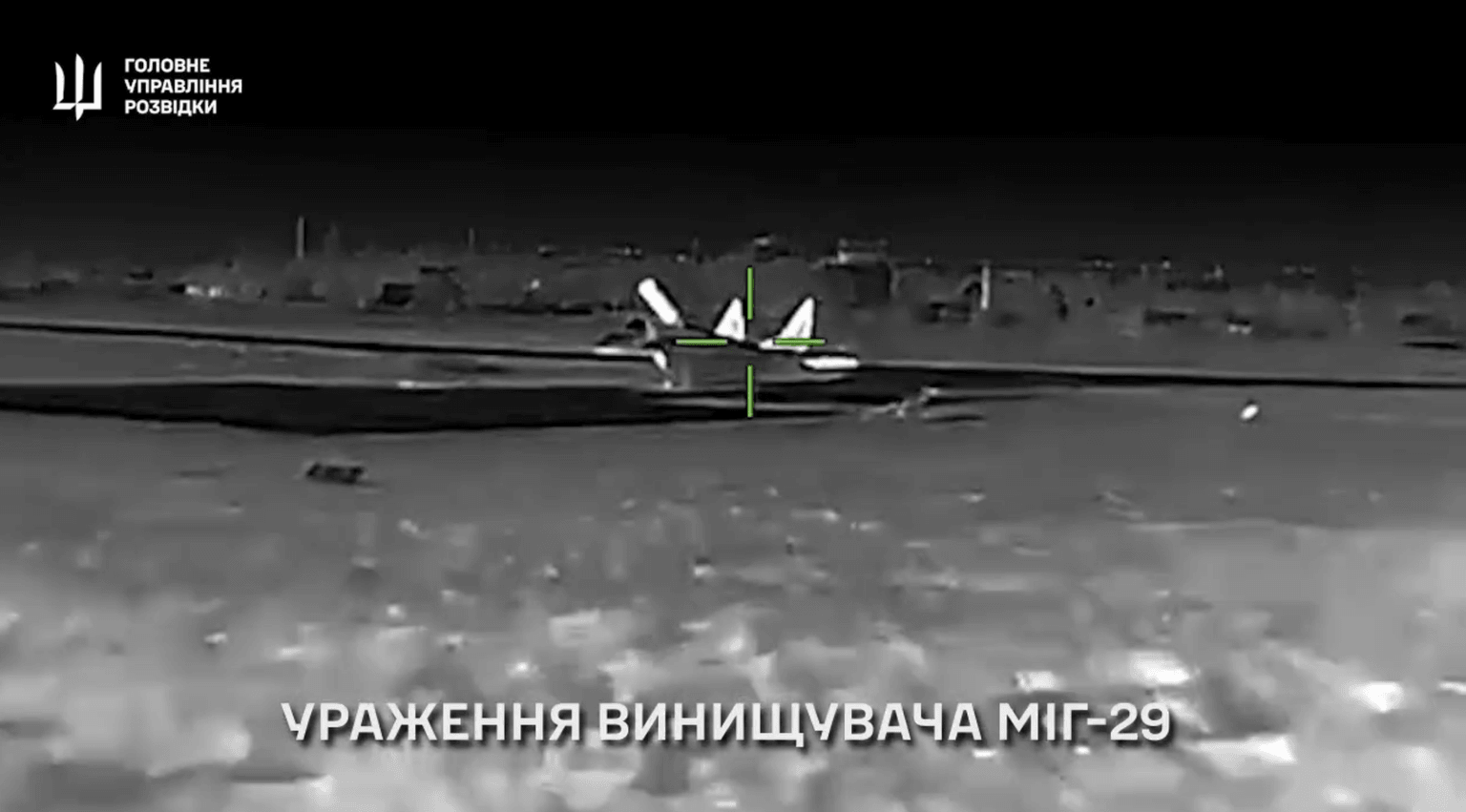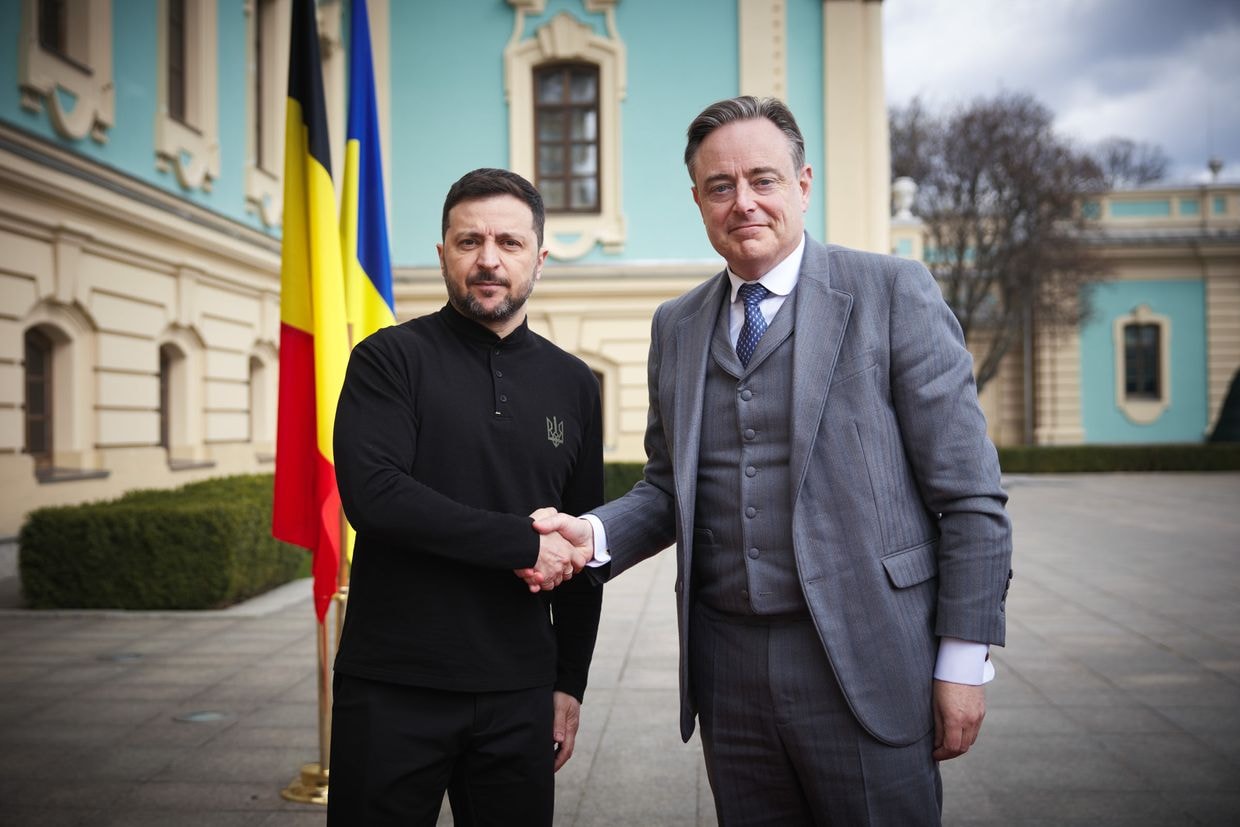
Western hesitation continues to undermine Ukraine
German Chancellor Friedrich Merz holds a joint press conference with Italian Prime Minister Giorgia Meloni (not in picture), on May 17, 2025, in Rome, Italy. (Antonio Masiello/Getty Images)
On May 28, President Volodymyr Zelensky visited Germany and met with the country’s new Chancellor, Friedrich Merz. There were high expectations that Berlin would finally authorize the delivery of Taurus long-range missiles — a long-standing request from Kyiv since the beginning of the Russian invasion.
However, this demand had been systematically rejected by former Chancellor Olaf Scholz, who feared dragging Germany into a direct confrontation with Moscow.
Instead of Taurus missiles, Merz announced a new 5 billion euro aid package and a commitment that Germany would support the production of long-range weapons on Ukrainian territory.
Although these systems are not as sophisticated as the Taurus — whose operation would require months of training — the models to be co-produced by Berlin and Kyiv have the advantage of being easier to use, which could accelerate their integration into the Ukrainian Armed Forces.
While investing in Ukraine’s defense industry is necessary — something President Zelensky himself has emphasized in urging allies to strengthen the country’s defensive capabilities — the fact that he returned from Germany without a Taurus delivery promise reveals a deeper issue.
These missiles represent not only a powerful symbolic gesture, demonstrating that the West is truly committed to Ukraine’s defense, but also an immediate and tangible impact on the battlefield.
As recently highlighted by the Kyiv Independent, the Taurus missile can be programmed to detonate only after penetrating multiple layers of protection, making it especially effective against strategic targets like the Crimean Bridge.

Beyond being an important symbol for Russian President Vladimir Putin, that bridge is a crucial logistical link between mainland Russia and the occupied peninsula — a target of both symbolic and operational significance.
The absence of the Taurus in this package highlights a familiar blind spot: many Western governments still underestimate how much timing matters.
In a war, it’s not just about how much support is given, but how quickly it comes. Delays in key decisions don’t just slow progress — they quietly erode Ukraine’s position on the ground.
Has the West become so focused on the latest headlines, diplomatic theater, and talks in Istanbul that it has forgotten to reflect on its own recent history and the decisions made over the past three years?
The truth is that the West sabotages itself by delaying the release of essential resources — a hesitation systematically exploited by Russia.
That was the case with the F-16 fighter jets: the U.S. and European countries, initially fearful of escalation, delayed their delivery by more than a year — only relenting after intense Ukrainian pressure and decisive support from countries like the Netherlands and Denmark.
The same pattern occurred with the Leopard 2 tanks, delivered only in early 2023; with the UK’s Challenger 2 tanks, which arrived in March 2023; and with the U.S. M1 Abrams, delivered only in September that year — a year and a half after the invasion.
Even Patriot air defense systems, vital for intercepting Russian missiles, faced initial resistance due to escalation fears and were only delivered in early 2023. Storm Shadow cruise missiles likewise only began arriving in May 2023. Given all this, the inevitable question is: why so much hesitation, if in the end they give in anyway?
Russia, unlike its Western counterparts, has shown no hesitation when it comes to speed — whether in advancing troops or manipulating diplomacy.
Every so-called negotiation is just another stalling tactic, with the Kremlin expertly layering new steps, new demands, and new distractions to stretch the clock. After the first Istanbul round, came the promise of a “memorandum”, only to be followed by yet another “new phase.”
It’s a script they’ve used repeatedly: feign interest, pretend flexibility, and use the time gained to recalibrate offensives.
U.S. President Donald Trump, for his part, appears to have started losing patience with Putin — but that frustration hasn’t translated into any concrete action. Instead, he ends up playing straight into Moscow’s hands, a convenient figure in a Kremlin-scripted performance designed to drain Western resolve and dress delay up as diplomacy.
The race faced by Ukraine and its European allies is, above all, a race against time — and many still don’t seem to realize it. For Europeans, this race involves rebuilding strategic autonomy in defense — a process that should have begun over a decade ago, with the annexation of Crimea.
At the very latest, the alarm bells should have rung in 2017, when Trump, then president, openly threatened to pull the U.S. out of NATO and, on one occasion when asked about Russian election interference, said he trusted Putin over his own intelligence agencies.
The signs were there, flashing red — but Europe chose to look away. Now, the cost of that complacency is becoming impossible to ignore.
For Ukrainians, this race against time is even more literal: every day counts, and every delay can mean a new Russian offensive. At this very moment, Russia is mobilizing around 50,000 troops near the border with Sumy — potentially signaling not just an attempt to create the “buffer zone” Putin has demanded, but preparations for a new large-scale military advance.
None of this is to downplay the support Europe has already provided — it’s been essential. But that doesn’t mean it’s been enough, or delivered with the urgency the moment demands. While Putin takes advantage of U.S. ambiguity, Europe often falls into the trap of responding with long-term commitments that, although important, have little immediate effect on the battlefield.
Trump, despite his recent tough rhetoric, continues to offer Moscow concessions before they’re even requested.
In February 2025, he stated, “I’d love to have them back. I think it was a mistake to throw them out,” referring to Russia’s expulsion from the G8 after the annexation of Crimea. It’s exactly the kind of signal that undermines Western unity and hands the Kremlin an unearned diplomatic win — no pressure needed.
Meanwhile, Europe’s delayed promises may look good on paper, but they don’t change the reality on the ground, where time and resolve are the most decisive weapons.
Gestures like promising Ukraine EU membership by 2030 are certainly meaningful. They send the right message — that Ukraine belongs in the European family and that a future of integration and reconstruction lies ahead.
But these are not messages that deter the Kremlin. Because 2030 is five years away — and in a war where every month can redraw the front lines, that’s a long time.
Ukraine has stunned the world with its resilience, determination, and ability to adapt under extraordinary pressure. But even under U.S. President Joe Biden — a president who, despite his caution and delays, remained firmly committed to Kyiv — 20% of Ukraine’s territory remains under illegal Russian occupation. The question now is: what will Ukraine’s map look like in five years?
Europe, out of fear of escalation, has too often treated Ukraine as a burden. But the truth is that Ukraine should be seen as an opportunity — for integration, for strengthening collective security, and for renewing the European project.
Its Armed Forces, forged in the most demanding conditions, have accumulated real combat experience, developed homegrown technologies, created new drone models, and demonstrated a level of adaptability that many European militaries lack. More than that: Ukraine has kept its institutions functioning and its government operating under the pressure of war — something most European countries would struggle to do.
Ukraine is not just a country in need of help; it’s a partner with valuable capabilities to offer.
Europe must also understand that not every show of strength leads to escalation.
The recent use of the Russian Oreshnik missile against Ukrainian territory — following the U.S. decision in November 2024, under Biden, to authorize Ukraine’s use of ATACMS inside Russia — was a calculated, demonstrative move, not the start of a broader escalation.
In contrast, the unprecedented attacks on Kyiv and other regions in recent days were deliberate Russian actions that didn’t follow any “Ukrainian provocation.” They were likely triggered by something else entirely: the West’s visible hesitation to act more decisively.
When deterrence is delayed or watered down, it doesn’t prevent escalation — it invites it.
The message Moscow will understand is not the one about promises for 2030 — but the one about deliveries tomorrow.
Editor’s Note: The opinions expressed in the op-ed section are those of the authors and do not necessarily reflect the views of the Kyiv Independent.









